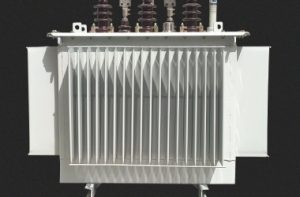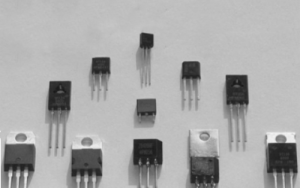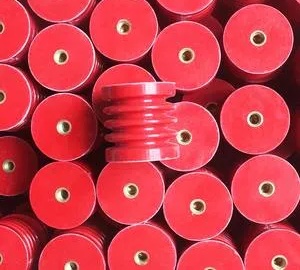Electronic Components Supplier | Transformers, Inductors, Inverters
The inverter is one of the most important devices in a solar energy system. It is a device that converts direct current (DC) electricity produced by solar panels into alternating current (AC) electricity used by the grid. In direct current, electricity maintains a constant voltage in one direction. In alternating current, current flows in both directions in the circuit as the voltage changes from positive to negative. Inverters are just one example of a class of devices called power electronics that regulate the flow of electricity.
Fundamentally, an inverter does a DC-to-AC conversion by switching the direction of the DC input back and forth very quickly. As a result, the DC input becomes an AC output. Additionally, filters and other electronics can be used to generate clean, repeating sine-wave voltages that can be injected into the grid. A sine wave is a shape or pattern that voltage develops over time, it is a pattern of electricity that the grid can use without damaging electrical equipment designed to operate at a specific frequency and voltage.
The first inverters were created in the 19th century and were mechanical. For example, a rotating motor would be used to continuously change whether the DC source is connected forward or backward. Today, we make electronic switches from transistors, which are solid-state devices with no moving parts. Transistors are made of semiconductor materials such as silicon or gallium arsenide. They control current flow in response to external electrical signals.
A 1909 500 kW Westinghouse "Rotary Converter", an early type of inverter.
A 1909 500 kW Westinghouse "Rotary Converter", an early type of inverter. Illustration courtesy of Wikimedia.
If you have a home solar system, your inverter may perform a variety of functions. In addition to converting solar energy to alternating current, it monitors the system and provides a gateway to communicate with computer networks. Solar-plus-battery storage systems rely on advanced inverters to operate without any grid support in the event of a power outage, if they are designed to do so.
Towards an inverter-based grid
Historically, electricity has been primarily produced by burning fuel and producing steam, which then spins a turbine generator, which produces electricity. The motion of these generators produces alternating current as the device rotates, which also sets the frequency, or number of times the sine wave repeats. Power frequency is an important indicator for monitoring the health of the power grid. For example, if there is too much load (too many devices consuming energy), energy will be removed from the grid faster than it can be supplied. As a result, the turbine will slow down and the AC frequency will decrease. Because turbines are huge rotating objects, they resist changes in frequency, like all objects resist changes in motion, a property called inertia.
As more and more solar systems are added to the grid, there are more inverters connected to the grid than ever before. Inverter-based power generation can produce energy at any frequency and does not have the same inertial properties as steam-based power generation, since no turbines are involved. Therefore, the transition to a grid with more inverters requires building smarter inverters that can handle frequency changes and other disruptions that occur during grid operation, and help stabilize the grid against these disruptions.
Grid Services and Inverters
Grid operators manage the supply and demand of electricity in the power system by providing a range of grid services. Grid services are activities performed by grid operators to maintain system-wide balance and better manage power transmission.
Smart inverters can respond in various ways when the grid stops operating as expected, such as when there is a deviation in voltage or frequency. Generally speaking, the standard for small inverters (such as those connected to a home solar system) is to stay on or "ride through" during small interruptions in voltage or frequency, and if the interruption lasts a long time or is larger than normal, They will disconnect themselves from the grid and shut down. Frequency response is especially important because frequency dips are associated with unexpected shutdowns of power generation. In response to changes in frequency, the inverter is configured to change its power output to restore the standard frequency. Inverter-based resources may also respond to signals from operators to change their power output as other supply and demand in the power system fluctuate, a grid service called automatic generation control. In order to provide grid service, the inverter needs to have controllable power. This can be electricity generation, such as solar panels that are currently generating electricity, or storage, such as a battery system that can be used to provide previously stored electricity.
Another grid service that some advanced inverters can provide is grid connection. If the grid fails, the grid-tied inverter can start the grid – a process known as black start. Traditional "grid-following" inverters require an external signal from the grid to determine when switching occurs to generate a sine wave that can be injected into the grid. In these systems, power from the grid provides the signal that the inverter is trying to match. More advanced grid-tied inverters can generate their own signals. For example, a small solar panel network might designate one of the inverters to operate in grid-forming mode, while the others follow its lead, like dancing partners, to form a stable grid without any turbine generation .
Reactive power is one of the most important grid services an inverter can provide. On an electrical grid, voltage—the force that pushes the charge—always switches back and forth, as does current—the movement of the charge. Electrical power is maximized when voltage and current are synchronized. However, sometimes voltage and current have a delay between their two alternating modes, such as when a motor is running. If they are not synchronized, part of the power flowing through the circuit cannot be absorbed by the connected equipment, resulting in a loss of efficiency. More total power is required to produce the same amount of "real" power – the power that the load can absorb. To solve this problem, utility companies provide reactive power to bring the voltage and current back into sync, making it easier to consume electricity. This reactive power is not used by itself, but makes other power useful. Modern inverters can both provide and absorb reactive power to help the grid balance this important resource. Additionally, distributed energy sources such as rooftop solar are particularly useful sources of reactive power because reactive power is difficult to transmit over long distances.
Inverter type
There are several types of inverters that can be installed as part of a solar system. In a large utility plant or mid-sized community solar project, each solar panel may be connected to a single central inverter. String inverters connect a group of panels (one string) to one inverter. The inverter converts the power generated by the entire string into alternating current. Although cost-effective, this setup can result in less power generation on the string if any individual panels experience issues such as shading. Microinverters are small inverters placed on each panel. For microinverters, shading or damage to one panel will not affect the power that can be drawn from other panels, but microinverters can be more expensive. Both types of inverters can be assisted by a system that controls how the solar system interacts with the additional battery storage. The solar energy can be directly passed through DC or converted to AC to charge the battery.







